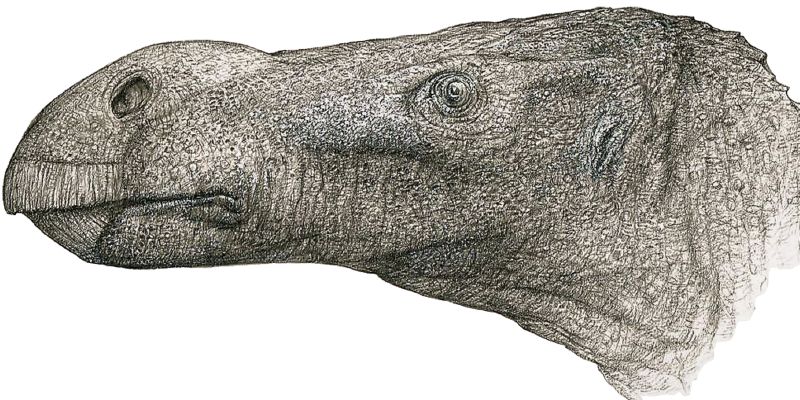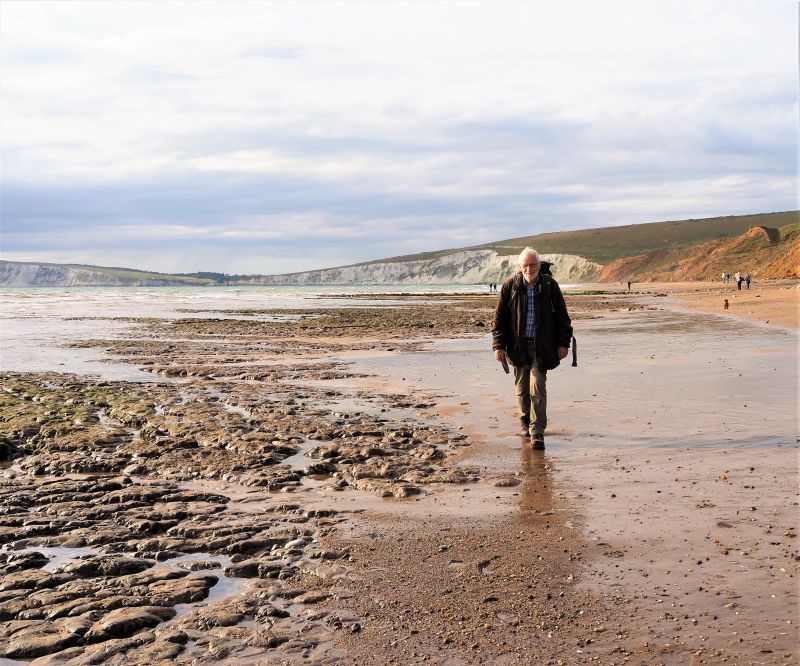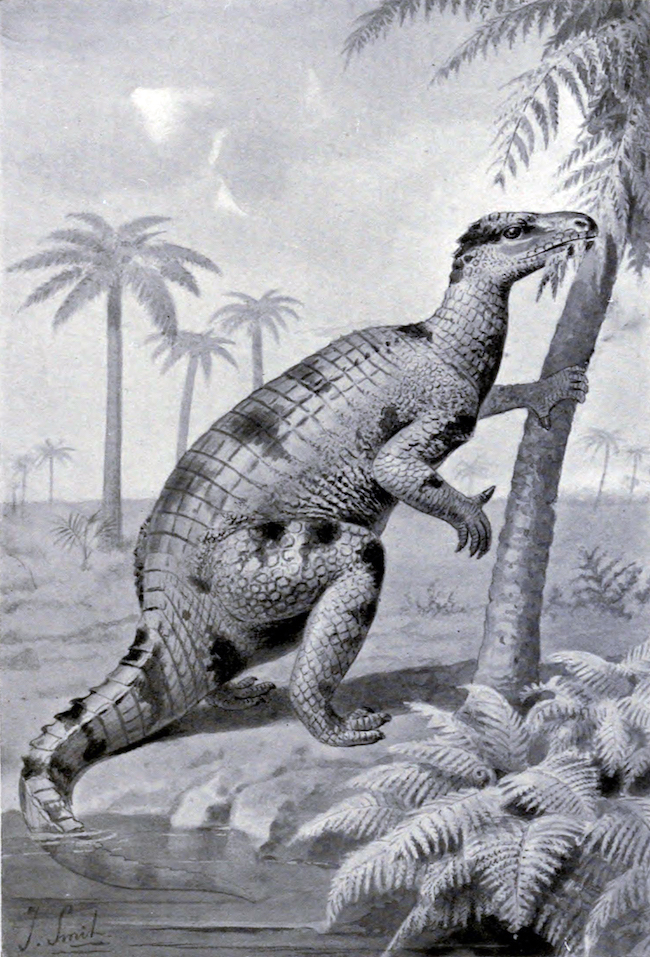
When you think of dinosaurs, ones like Tyrannosaurus rex, Brontosaurus or Triceratops likely come to mind. Scientists announced on November 10, 2021, that they found an unusual big-nosed dinosaur species on the Isle of Wight off southern England. Researchers with the University of Portsmouth and Natural History Museum identified the new species.
The Journal of Systematic Palaeontology published the new peer-reviewed findings on November 10, 2021.
Meet Brighstoneus simmondsi, the big-nosed dinosaur
This new species, Brighstoneus simmondsi, had an unusual large nose unlike any other seen before. A retired general practitioner physician, Jeremy Lockwood, made the fortuitous identification, long after the initial discovery of the bones themselves. At the time, Lockwood was studying the bones of another dinosaur species known as Iguanodon.
He also wanted to prove that the two most common dinosaurs on the Isle of Wight were not alone as had been thought. These species have the nickname the “cattle of the Cretaceous.” The Cretaceous Period lasted from about 145 to 66 million years ago. Were there indeed other species on the Isle at that time?
The original discovery of the bones in the 1970s was alongside those of a theropod dinosaur with the name of Neovenator salerii. Theropods are famous for their bird-like clawed feet.
Odd nasal bones
Lockwood was examining the bone collections at the Natural History Museum in London and Dinosaur Isle Museum when he saw something unexpected.

He came across a nasal bone different from any others he had seen before. As Lockwood stated:
For over 100 years, we’d only seen two types of dinosaur on the Isle of Wight, the plant-eating Iguanodon bernissartensis and Mantellisaurus atherfieldensis. I was convinced that subtle differences between bones would reveal a new species, so I set out to measure, photograph and study the anatomy of each bone. My background is medicine, so I’ve studied anatomy and was always struck by the fact that the bones we find in humans all look exactly the same. I’ve seen dinosaur bones that are reportedly from the same species, but I’ve been baffled as to why they would look so different.
Not recognized until now
The bones of the new species had been in storage since the 1970s but went unrecognized for what they were. Until now. As it happened, the Covid-19 lockdown played a part in the discovery. Lockwood explained:
Last year during lockdown – after four years of going through boxes and boxes of bones – I decided to reconstruct the skull of a specimen which had been in storage since 1978, and to my astonishment I noticed the end of its nose was bulbous. This discovery made it one of the happiest days of lockdown because it was a sign there really was something different about this particular dinosaur from the Isle of Wight.
Lockwood recommends sifting through already existing bone collections for new specimens, saying:
If you want to discover a new dinosaur, go into the basement of a museum rather than the field. The finding of such an impressive carnivore [Neovenator salerii] all those years ago overshadowed the bones of Brighstoneus simmondsi, so most of it was locked away in storage.
A big-nosed dinosaur species
The teeth provided the first clue that this was a previously unknown dinosaur species. The teeth were different, with ridges on each side. So if these weren’t Iguanodon bones, what were they? Lockwood continued:
Then I noticed the teeth were different with ridges on both sides, so I shared my findings with Professor Dave Martill from the University of Portsmouth and Dr. Susannah Maidment from the Natural History Museum. We were all convinced it was a new species, so I’ve spent months describing it in detail.

So, why did Brighstoneus simmondsi, named after the village of Brighstone on the Isle of Wight, have such a large nose? The researchers say it may have been used by male dinosaurs to attract female dinosaurs. Or perhaps it helped to scare away other male rivals.
Lockwood is understandably excited about the new finding, saying:
When I was a little boy, my father took me to an antique fair and bought me a Moroccan dinosaur bone, which was the jewel of my collection. To go from being the proud owner of a piece of Moroccan bone to naming a new species in England is wonderful.
Bottom line: Scientists have identified a new big-nosed dinosaur species among a collection of bones on the Isle of Wight. This dinosaur had a much larger snout than either of the other two known species at the time.











